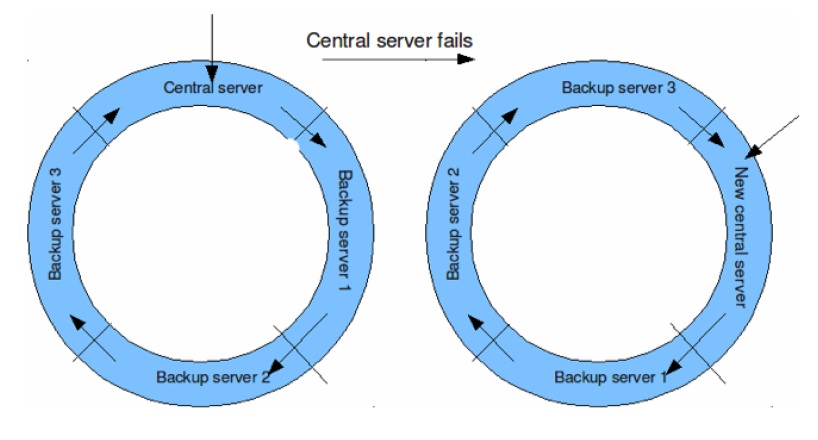Deborah Hanus


Humans can recognize even a few pixels in the context of a 32x32 pixel image, although those same pixels are completely indiscernible when they are taken out of the image context. We model the problem of pixel identification as a distributed system. Using one-hop communication and constraint propagation, each chameleon pixel calculates a probability distribution on its location given observations of its neighbors. We use human fixation data to choose the starting points of the constraint propagation, and compare the performance of our Chameleon-pixels with the human visual system. We find that given human fixation data, the Chameleon-pixels make a similar pattern of errors to those we would expect from a human observer, lending credence to the integral role human fixations play in the role of object recognition. This insight can be used to improve the efficiency of future image reproduction and recognition systems. [final paper]
This was a final project for 6.870 - Advanced Topics in Computer Vision, an interdisciplinary graduate seminar taught by Prof. Antonio Torralba. We discussed topics at the intersection of computer and human vision. I took this class in my M.Eng. year.

The Chrome Operating System (Chrome OS) is an operating system, which is being developed by Google, that runs on specialized hardware. The entire system, hardware through software, is called the Chromebook. The Chrome OS is based on the open source project Chromium OS. Chrome OS differs from traditional operating systems in that it is designed to work specifically with web applications. We investigated and evaluated the security principles off of which Chrome OS is based. This paper documents the result of our research. In this paper, we first articulate the threat model. Second, we discuss how the system works, focusing on (a) how the system verifies the code is safe to use, and (b) how the user data is encrypted and separated. Finally, we evaluate the system, compare it to other operating systems, and discuss our suggestions to make Chromebook more secure. [final paper]
This was a final project for 6.858 - Computer System Security, a graduate class exploring systems and web-based security taught by Prof. Nickolai Zeldovich. I took this class during my M.Eng. year.

We present a client-server design for a collaborative, distributed text editor that makes use of write-ahead logging, Transmission Control Protocol (TCP) and serialization algorithms. Clients are able to edit collaboratively while online and edit a local copy when offline. Updates are sent from a user to a central server, which serializes data coming from multiple users. Write-ahead logging adds updates to the server's log file, the updates are added to the server's copy of the document, and the server sends the changes to the clients and to backup servers. We made a number of decisions to ensure that the text editor makes efficient use of resources. First, we chose a client-server design to simplify serialization in the absence of faults. Second, we use back-up servers to protect against loss of service. Finally, regular fingerprinting ensures consistency in the face of network failures. [final paper]
This was a final design project for 6.033 - Computer System Security, an undergraduate subject exploring the history and design of computer systems taught by Profs. Robert Morris, Sam Madden, and Butler Lampson. I took this class in my third year at MIT.
Infants are born into a blurry world of indistinct shapes and images, and full development of the ability to reliably recognize and distinguish faces is not completed until the late stages of childhood. Morton and Johnson (1991) proposed a dual-process theory, suggesting that while developing children process details before they can process holistically. Here we aim to use fMRI data provide to either support or refute dual-process theory. Second, we aim to determine the nature of the dependence between the OFA Occipital Face Area and FFA (Fusiform Face Area). To achieve these aims, we scan 6 and 10 year-olds and adults as they view images of upright faces, inverted faces, and objects (control). We find evidence that that the OFA is largely responsible for the children's feature-based recognition, and that the FFA is largely responsible for the adults' configuration-based processing recognition. Additionally, our findings provide evidence for feed-forward signaling from the OFA to the FFA. In establishing this model of feed-forward communication, we also present a neural model, which, to the best of our knowledge, accurately explains the results of dual process theory. [final paper]
This was a research proposal written for 9.85 - Infant and Early Childhood Cognition, an undergraduate subject reviewing seminal experiments and methods for taught by Prof. Laura Shulz. The proposed research was never actually performed. I took this class in my second year at MIT.
Time perception poses a fascinating but, as yet, unsolved puzzle in neuroscience. Because the process by which we estimate time durations often involves summing information from more than one of the five senses, it is possible to induce illusions where one modality 'tricks' another modality. Investigating these illusions may facilitate understanding of the overall mechanisms of time perception itself. With a deeper understanding of time perception, we may discover improvements in fields as far-flung as sports training, website design, or even the improvement of diagnosis and treatments in mental health. In this preliminary study, we propose that varying the frequency at which a strobe light is projected -- at 200 Hz and 400 Hz, as well as 17,000 Hz (perceived as constant light) and no light -- will cause participants to misestimate how long an auditory stimulus in the same environment lasted. Specifically, we propose that high frequency strobe lights will cause slowed auditory time perception and thus overestimates of how long an auditory stimulus actually lasted, as opposed to lower frequency strobe lights will cause faster time estimates. Although our initial results were statistically inconclusive, the general trends in the data set imply that our hypothesis may still be valid; further investigations are merited. [final paper]
This was a research project for 9.35 - Sensation and Perception, an undergraduate subject discussing seminal experiments in perception taught by Prof. Pawan Sinha. I took this class in my first year at MIT.